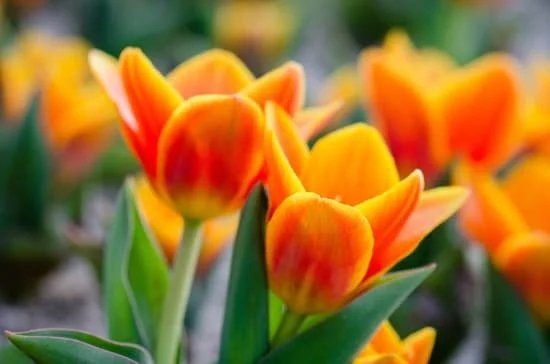Are you interested in starting your own vegetable garden but don’t have a lot of outdoor space? Look no further. In this article, we will explore the wonderful world of vegetable container gardening. From choosing the right containers to selecting the best vegetables for your garden, we’ve got you covered.
We’ll also provide some creative ideas for small spaces and troubleshoot common issues that may arise. And to inspire you even more, we’ll showcase stunning pictures of successful vegetable container gardens. Get ready to bring the joy of gardening into your home with our vegetable container gardening ideas and pictures.
Container gardening is a fantastic way to grow your own fresh produce, even if you don’t have access to a large yard or garden space. Whether you live in an apartment, have a small patio, or just want to add some greenery to your living space, vegetable container gardening can be a great solution. With the right containers, tools, and know-how, you can enjoy a bountiful harvest right at home.
In this article, we will take you through the basics of vegetable container gardening and provide all the information and inspiration you need to get started on your own garden. And what better way to kick things off than by showcasing some beautiful pictures of successful vegetable container gardens? Stay tuned as we guide you through the exciting world of growing your own vegetables in containers.
Choosing the Right Containers for Garden
When it comes to vegetable container gardening, choosing the right containers is crucial for the success of your garden. The right container will provide adequate space for the vegetables to grow and thrive, while also ensuring proper drainage and aeration. Here are some key considerations when choosing the right containers for your vegetable garden:
Material
The material of the container is important as it can affect the temperature of the soil, moisture retention, and overall durability. Common materials for containers include plastic, ceramic, wood, and fabric. Each material has its pros and cons, so it’s essential to consider factors such as climate, aesthetics, and maintenance when deciding on the material for your containers.
Size
The size of the container is also a critical factor to consider. Different vegetables require different amounts of space to grow. Larger vegetables like tomatoes or peppers will need larger containers to accommodate their root systems, while smaller herbs or lettuces can thrive in smaller pots. Be sure to research the specific space requirements of each vegetable you plan to grow and choose appropriately sized containers.
Drainage
Proper drainage is essential for preventing waterlogged soil which can lead to root rot and other issues. Look for containers with drainage holes at the bottom to allow excess water to escape. If your chosen container doesn’t have drainage holes, consider drilling some yourself to ensure optimal growing conditions for your vegetables.
When selecting containers for your vegetable garden, be sure to take into account material, size, and drainage needs to provide a healthy environment for your plants. By choosing the right containers, you’ll set yourself up for success in growing a thriving vegetable container garden.
For more inspiration on choosing the right containers for your vegetable garden, take a look at these stunning vegetable container gardening ideas pictures
Essential Tools and Supplies for Vegetable Container Gardening
When starting a vegetable container garden, having the right tools and supplies is essential for success. Here are some must-have items to consider when embarking on your container gardening journey:
1. Containers: Choose containers that are large enough to accommodate the root system of your chosen vegetables. Consider options such as plastic or terra cotta pots, window boxes, hanging baskets, or even repurposed items like buckets or barrels.
2. Soil: Select a high-quality potting mix that is well-draining and nutrient-rich. Avoid using regular garden soil, as it can become compacted in containers and hinder plant growth.
3. Watering Can or Hose: Ensure you have a reliable watering system in place, whether it’s a watering can for smaller gardens or a hose with a nozzle for larger setups. Consistent watering is crucial for container gardening success.
4. Fertilizer: Supplement the nutrients in your potting mix with a balanced fertilizer specifically formulated for container plants. Look for options with essential macronutrients like nitrogen, phosphorus, and potassium.
5. Hand Tools: Keep small hand tools like trowels, pruners, and gardening gloves handy for planting, pruning, and maintaining your container garden.
6. Plant Supports: Depending on the vegetables you choose to grow, you may need stakes or trellises to provide support as they mature.
By ensuring you have these essential tools and supplies on hand before starting your vegetable container garden, you will set yourself up for a successful growing season full of bountiful harvests.
Selecting the Best Vegetables for Container Gardening
When it comes to vegetable container gardening, choosing the right vegetables to grow in containers is crucial to the success of your garden. While many vegetables can thrive in containers, some are better suited for the limited space and growing conditions that containers provide.
Tomatoes are a popular choice for container gardening due to their versatility and high yield. Varieties such as cherry tomatoes or patio tomatoes are ideal for small containers. Herbs like basil, parsley, and cilantro also do well in containers, adding flavor to your cooking while taking up minimal space.
Leafy greens such as lettuce, spinach, and kale are excellent choices for container gardening because they don’t need much depth to grow their roots. Root vegetables like carrots and radishes can also be grown in deeper containers and offer a bountiful harvest with proper care.
In addition to these traditional options, many gardeners have found success in growing peppers, cucumbers, and even small varieties of eggplant in containers. The key is to select compact or dwarf varieties that are well-suited for contained spaces.
| Vegetable | Ideal Container Size |
|---|---|
| Tomatoes | 5-gallon pot or larger |
| Lettuce | Shallow window box or planter |
| Basil | Small to medium-sized pot |
Tips for Proper Planting and Maintenance
When it comes to vegetable container gardening, proper planting and maintenance are essential for the success of your garden. Here are some tips to help you get started and ensure that your vegetables thrive in their containers:
1. Choose the right soil: It’s important to use high-quality potting mix that is specifically designed for container gardening. This will provide the necessary nutrients and drainage for your vegetables to grow healthy and strong.
2. Water wisely: Container gardens require more frequent watering than traditional gardens, as the soil tends to dry out faster. Make sure to water your vegetables regularly, especially during hot, dry weather. Consider using a self-watering container or installing a drip irrigation system to ensure consistent moisture.
3. Monitor for pests and diseases: Keep an eye out for common garden pests such as aphids, caterpillars, and mites, as well as diseases like powdery mildew and blight. Regularly inspect your plants for any signs of infestation or illness, and take appropriate measures to control and prevent these issues.
4. Provide adequate space and support: As your vegetables grow, they may need additional support to prevent them from toppling over. Use trellises, stakes, or cages to provide support for vining crops like tomatoes, cucumbers, and peas. Additionally, make sure that each plant has enough space in its container to spread out its roots and branches.
By following these tips for proper planting and maintenance, you can help ensure the success of your vegetable container garden. With the right care and attention, you’ll be rewarded with a bountiful harvest of fresh, homegrown produce right on your patio or balcony.
For more inspiration on how to create a thriving vegetable container garden in a small space, be sure to check out some vegetable container gardening ideas pictures online. Visualizing successful examples can provide you with new insights on how to arrange your own containers creatively while maximizing space efficiency in unconventional areas like rooftops or urban balconies.
Whether you’re interested in vertical gardening techniques or mixed-container arrangements featuring edible flowers alongside vegetables – seeing these ideas come alive through photographs can motivate you further as you embark on this exciting horticultural adventure.
Creative Container Gardening Ideas for Small Spaces
When it comes to vegetable container gardening, having a limited space should not discourage you from embracing this rewarding and sustainable hobby. In fact, there are numerous creative container gardening ideas that are perfect for small spaces. Whether you live in an apartment with a tiny balcony or have a small backyard, there are plenty of innovative ways to grow your own vegetables in containers.
One of the most popular creative ideas for small spaces is vertical gardening. This technique involves growing plants vertically on a wall or trellis, utilizing the vertical space rather than just the horizontal space. This can be achieved by using hanging planters, wall-mounted containers, or even repurposing old pallets to create a vertical garden. Not only does this maximize space, but it also adds an aesthetic appeal to your outdoor area.
Another great idea for small space vegetable container gardening is using multi-tiered planters. These stackable planters allow you to grow multiple types of vegetables in one compact area. This is especially useful if you have limited floor space but still want to grow a variety of crops. Additionally, you can get creative with the containers themselves by upcycling old buckets, crates, or even old furniture into unique and functional planters.
For those with very limited space, window box gardening is an excellent option. Window boxes can be installed on windowsills or railings, providing the perfect spot for growing herbs, cherry tomatoes, peppers, and other small vegetables. This not only adds greenery to your home but also provides fresh produce right at your fingertips.
| Creative Gardening Idea | Description |
|---|---|
| Vertical Gardening | This technique utilizes vertical space by growing plants on walls or trellises. |
| Multi-tiered Planters | Stackable planters allow for growing multiple types of vegetables in one compact area. |
| Window Box Gardening | Installing window boxes on windowsills or railings for growing herbs and small veggies. |
Troubleshooting Common Container Gardening Issues
Pests and Diseases
One common issue that container gardeners may face is dealing with pests and diseases that can affect their vegetable plants. Some of the most common pests that can attack container-grown vegetables include aphids, caterpillars, and spider mites. These pests can quickly decimate a plant if not properly controlled. Additionally, diseases such as powdery mildew and blight can also impact vegetable plants in containers.
To troubleshoot these issues, it’s important to regularly inspect your plants for any signs of pest infestation or disease development. If you notice any problems, take action immediately by using organic pest control methods or applying appropriate fungicides to prevent the spread of diseases. Maintaining good airflow around your containers and avoiding overwatering can also help prevent the development of common plant diseases.
Soil and Nutrient Deficiencies
Container gardening can sometimes lead to soil and nutrient deficiencies in your vegetable plants, especially if you are using the same soil year after year without replenishing it. Plants grown in containers rely solely on the nutrients present in the potting mix, so it’s important to regularly amend the soil with compost or slow-release fertilizers to ensure optimal plant growth.
If you notice that your plants are showing signs of nutrient deficiencies such as yellowing leaves or stunted growth, consider conducting a soil test to determine which specific nutrients are lacking. Based on the results, you can then adjust your fertilization practices to provide your vegetable plants with the necessary nutrients for healthy growth.
Environmental Stress
Another common issue when container gardening is environmental stress on your vegetable plants. Factors such as extreme heat, strong winds, or sudden temperature fluctuations can impact the health and productivity of your plants. To troubleshoot this issue, consider providing shade during periods of intense sunlight or moving containers to more sheltered locations during windy conditions.
Additionally, be mindful of watering practices to ensure consistent moisture levels for your plants. Installing a drip irrigation system or utilizing self-watering containers can help alleviate environmental stress caused by fluctuating water availability. By being proactive in addressing environmental stress factors, you can troubleshoot common issues that may arise when container gardening for vegetables.
Showcasing Stunning Pictures of Successful Vegetable Container Gardens
Container gardening doesn’t just have to be about functionality and practicality; it can also be incredibly aesthetically pleasing. In this section, we will showcase some stunning pictures of successful vegetable container gardens that will inspire and motivate you to start your own.
One of the most visually appealing aspects of vegetable container gardening is the ability to mix and match different plants to create beautiful and vibrant displays. For example, a container featuring bright red tomatoes alongside trailing green vines of cherry tomatoes can create a striking visual impact. Additionally, pairing tall and stately plants like peppers or eggplants with lower-growing herbs or lettuces can add depth and interest to your garden.
Another key element in creating visually stunning container gardens is the choice of containers themselves. From traditional terracotta pots to colorful ceramic planters, there are endless options for adding personality and style to your garden. Consider mixing different sizes and shapes of containers for added visual interest, or even repurposing unique items like old barrels or wooden crates for a more rustic look.
Lastly, don’t underestimate the impact of well-maintained and beautifully arranged vegetables in your containers. Proper watering, grooming, and maintenance not only ensure healthy plants but also contribute to the overall appeal of your garden. And by incorporating creative design elements such as trellises or plant supports into your containers, you can further enhance the visual appeal of your vegetable container garden.
With these inspiring pictures as your guide, you will be able to elevate the beauty of your container garden while still reaping the benefits of growing your own fresh vegetables right at home.
Conclusion and Next Steps for Starting Your Own Vegetable Container Garden
In conclusion, vegetable container gardening is a fantastic way to grow your own fresh produce, even in the smallest of spaces. With the right containers, tools, and knowledge of how to properly plant and maintain your vegetables, anyone can enjoy the benefits of a thriving container garden. Whether you have a small apartment balcony or a limited outdoor area, there are creative ideas and solutions to help you get started with your own vegetable container garden.
If you’re interested in starting your own vegetable container garden, it’s important to first assess your space and determine which vegetables will thrive in that environment. Consider the amount of sunlight available and the climate of your region to select the best veggies for your container garden. Once you’ve chosen your containers and gathered your supplies, be sure to follow proper planting and maintenance techniques to ensure successful growth.
For inspiration and ideas on how to set up and organize your vegetable container garden, be sure to take advantage of online resources such as websites and social media platforms where you can find an abundance of vegetable container gardening ideas pictures. These images can provide valuable insights into different types of containers, creative layouts, and beautiful arrangements that will motivate you on your journey to creating a stunning vegetable container garden of your own.
So don’t hesitate – get started on planning and growing your own bountiful vegetable garden today.
Frequently Asked Questions
What Vegetables Grow Well Together in a Container?
Vegetables that grow well together in a container are those with similar sunlight, water, and soil requirements. Some examples include lettuce and radishes, tomatoes and basil, or carrots and onions.
What Vegetables Do Well in Pots?
Many vegetables do well in pots, including tomatoes, peppers, lettuce, spinach, kale, and herbs like basil, thyme, or rosemary. It’s important to choose the right-sized pot and provide proper drainage for optimal growth.
What Is the Most Efficient Vegetable Garden Layout?
The most efficient vegetable garden layout is one that takes into consideration factors like sunlight exposure, water access, and plant compatibility. Utilizing raised beds or square foot gardening can maximize space while improving overall efficiency of the garden.

Welcome to my gardening blog! I am passionate about plants and enjoy sharing my knowledge and experiences with others. In this blog, I will write about everything related to gardening, from tips on how to get started to updates on my own garden projects.





